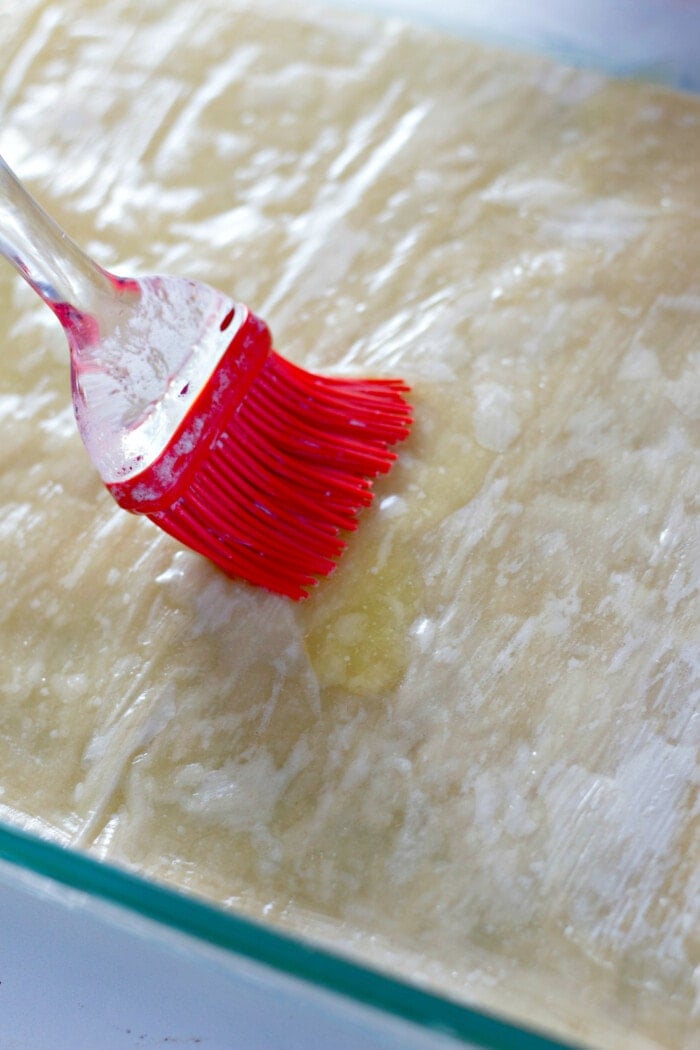
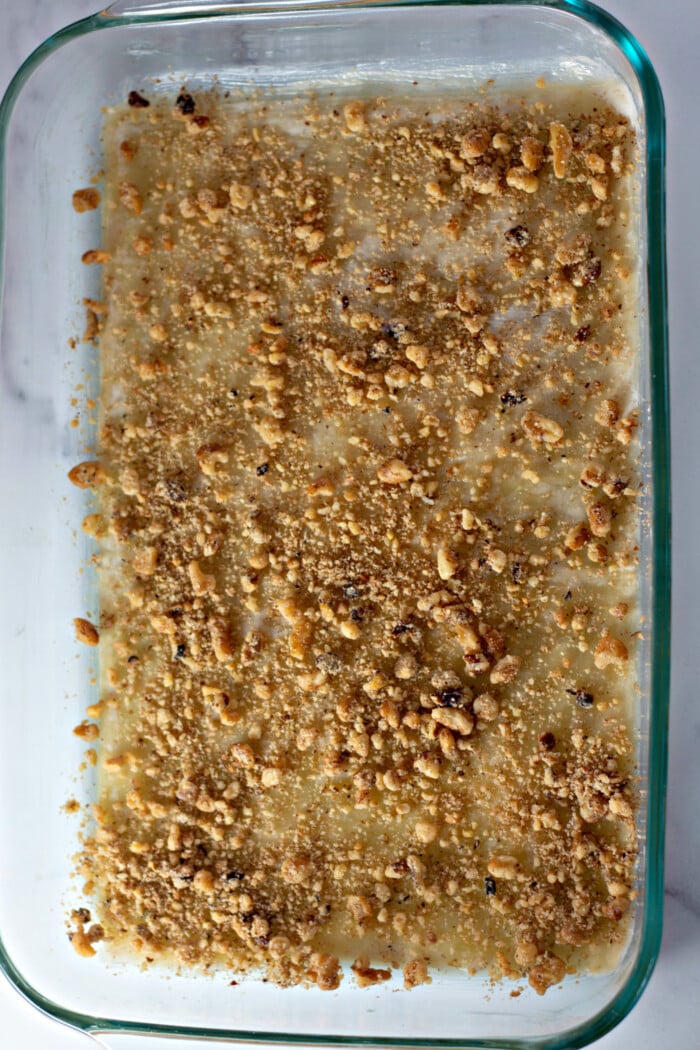
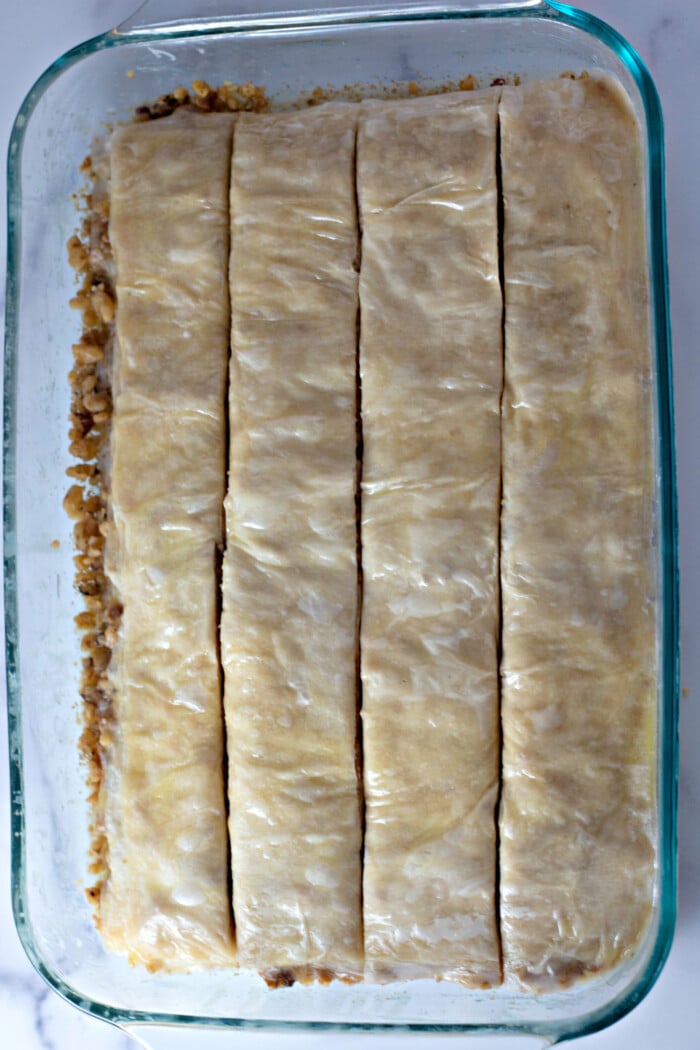
Make the Remaining Layers. Lay a stack of 5 sheets of phyllo dough over the walnut mixture, brushing each sheet with a small amount of butter as you go. Sprinkle another ¾ cup of the walnut mixture over the stack. Repeat the layers of 5 buttered phyllo sheets and 3/4 cup of topping, until walnut mixture is used up. Then top the whole thing with 10 last sheets of phyllo dough, brushing butter on each as you add them.
Cut and Bake. Brush the last layer with butter, and then slice the baklava into one-and-a-half inch strips across, then diagonally. You should have classic diamond-shaped baklava. Bake this uncovered for an hour and 25 minutes or so, until the pastry is golden-brown.
Add the Syrup, and Rest the Baklava. After the baklava has baked, take it out of the oven, and pour the syrup over it slowly and gently, trying to get an even pour over the entire dish. Most of the syrup will run down to the bottom, which is what it is supposed to do! But some of it will trickle into the top layers as well. You’ll end up with a lightly sweet and crispy top, with a sweeter and more dense bottom layer. Let the baklava cool completely (and ideally rest overnight) before serving.
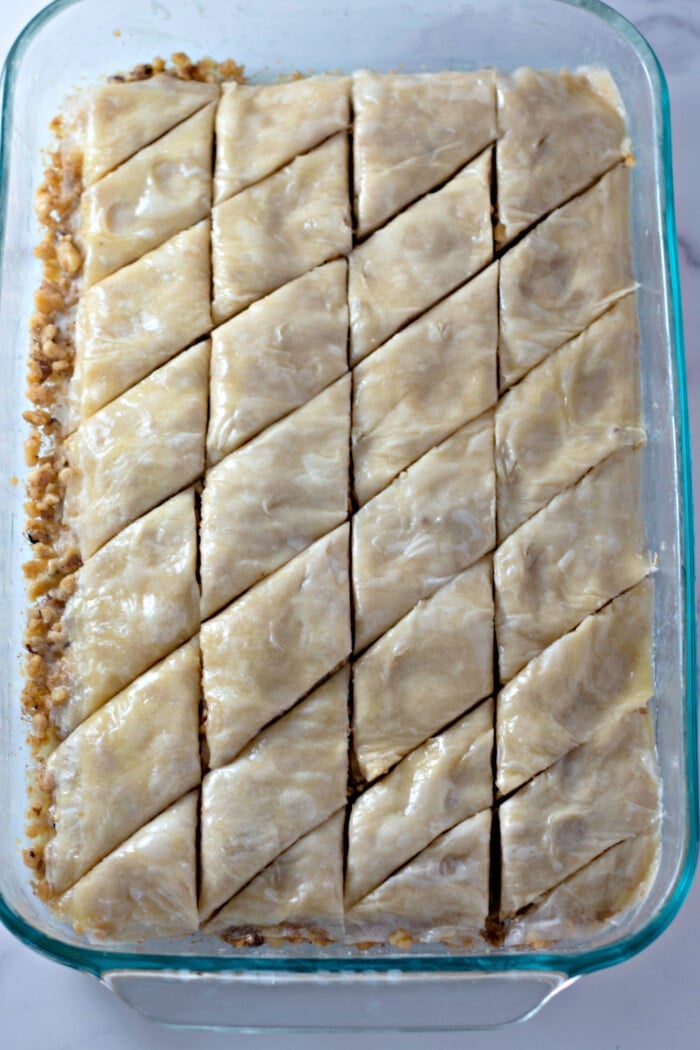
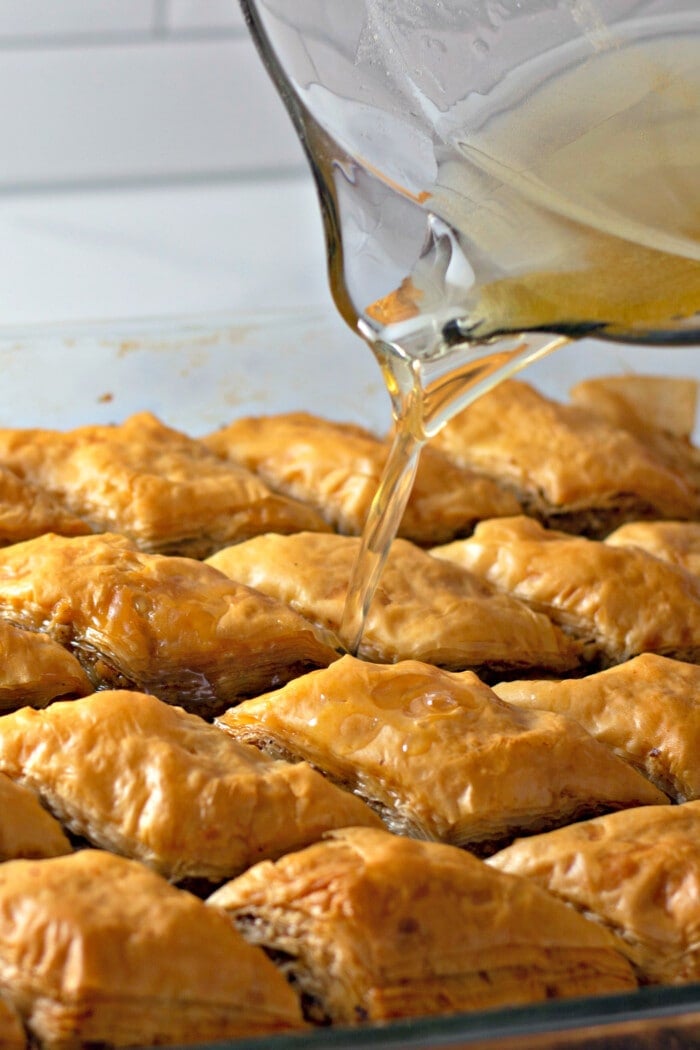
Tips for Success
Everyone has their favorite tips and tricks for making the perfect batch of baklava! Here are some of my favorite helpful hints for making this dessert with ease.
Thaw Carefully: The phyllo pastry must be thawed before you use it—frozen phyllo will crack and break apart while you handle it! Usually, phyllo is thawed overnight in the refrigerator, but some cooks recommend keeping it frozen until you’re ready to use it, and then microwaving for 30 to 60 seconds.
Keep Damp: You don’t want to wet the dough, because it’s so thin it will dissolve! At the same time, don’t let it dry out, because it’s so thin it will crumble. The best thing is to keep it humid, if that makes sense, by laying a damp (not wet!) towel or paper towel over the top of your phyllo pastry, moving it to grab a new sheet, and replacing it while you butter the sheet.
Be Patient! Making baklava isn’t difficult, but it does take some time. If you find yourself having to rush, it’s likely that you’ll end up with torn and crumbling sheets of pastry! So try to set aside at least an hour or so to assemble the dish, plus the hour and a half of baking time.
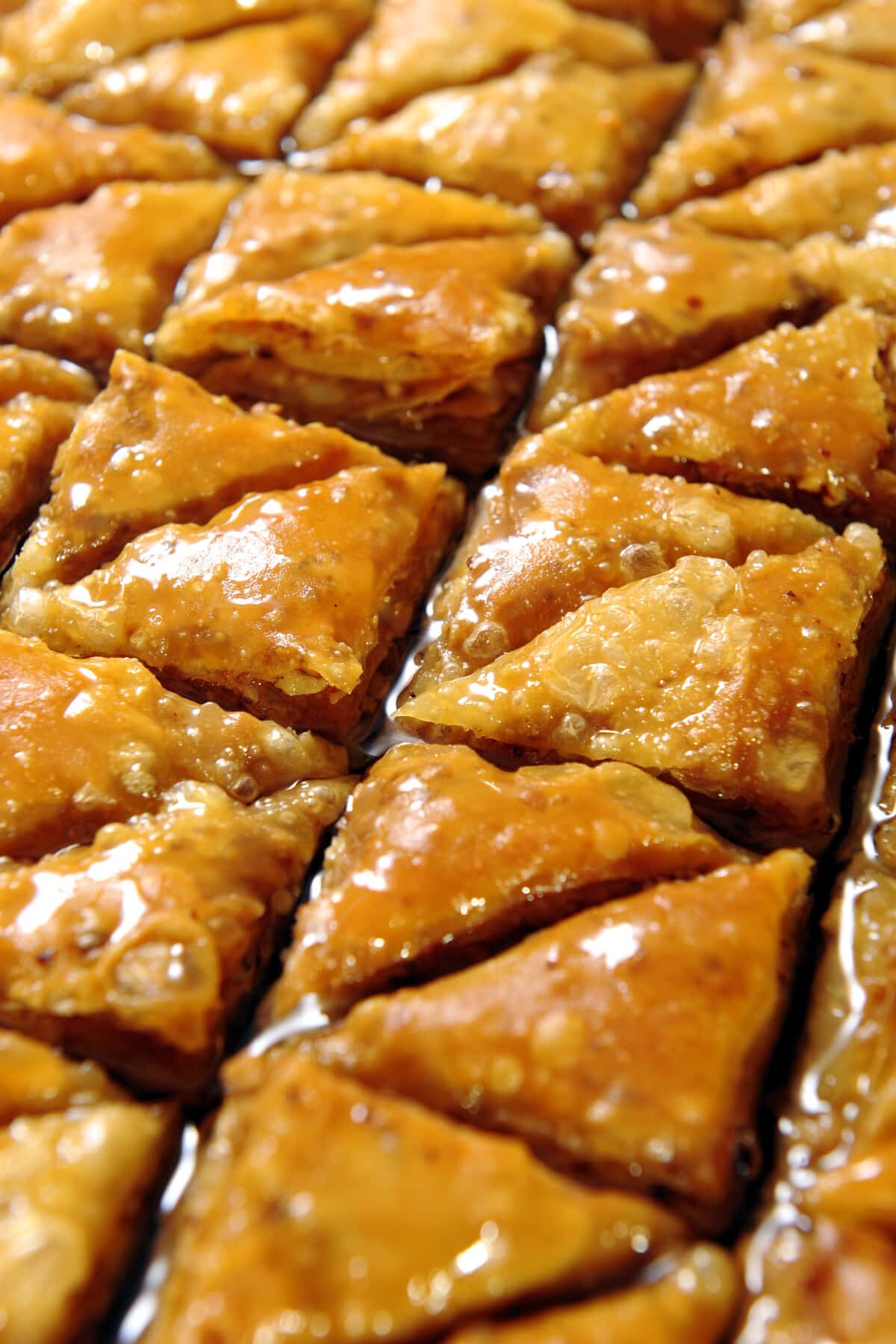
Baklava Recipe Flavor Variations
Since baklava is a traditional sweet in lots of different cultures (Greek, Turkish, Lebanese, Syrian, and Eastern European, just to name a few!) there are tons of different variations out there. Here are some easy variations you can try in your own kitchen!
Pistachio: Using crushed pistachios instead of crushed walnuts is an easy and authentic swap. Many classic baklava recipes call for using pistachios, with their distinctive green color and salty-sweet flavor. You can also use a combination of pistachios and walnuts.
Rosewater: Middle Eastern baklava is often scented with rosewater, which adds a beautiful floral taste and fragrance to this honeyed recipe. Just add 1/2 teaspoon (or to taste) to the syrup as it simmers.
Chocolate: Drizzle your baked and cooled baklava with melted chocolate for a satisfying twist! Just microwave a cup of chocolate chips in a microwave-safe bowl for 5-10 seconds at a time, stirring each time. When the chocolate is melted, stir in a tablespoon of butter, and then drizzle over the baklava with a spoon. Allow to cool before serving.

